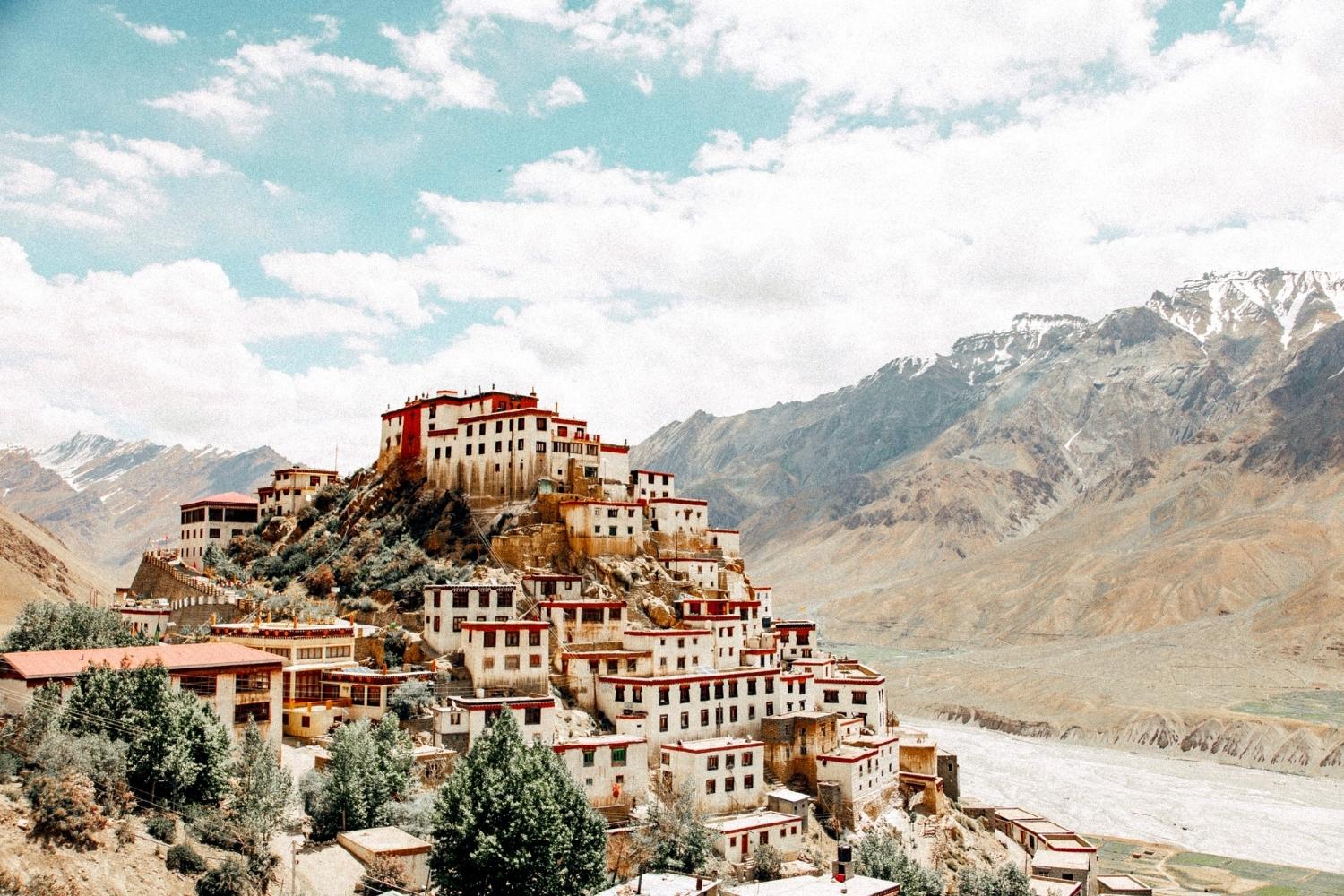
Ever wondered what makes monasteries in India so special? These serene sanctuaries are more than just places of worship; they are living museums of history, culture, and spirituality. Nestled in breathtaking landscapes, Indian monasteries offer a unique blend of architectural beauty and spiritual depth. From the snow-capped peaks of Ladakh to the lush greenery of Sikkim, these sacred spaces have stories to tell. Whether you're a history buff, a spiritual seeker, or just someone who loves stunning architecture, Indian monasteries have something for everyone. Ready to dive into the world of Indian monasteries? Let's explore 22 fascinating facts that will leave you in awe!
Key Takeaways:
- Explore the rich history and cultural significance of Indian monasteries, from ancient origins to modern contributions, and discover their unique architectural marvels and spiritual significance.
- Immerse yourself in the vibrant festivals and serene spiritual environment of Indian monasteries, and learn about the disciplined monastic life dedicated to spiritual growth and community living.
Ancient Origins
Monasteries in India have a rich history that dates back thousands of years. These spiritual havens have played a significant role in shaping the cultural and religious landscape of the country.
- The oldest monastery in India is the Tawang Monastery in Arunachal Pradesh, founded in the 17th century.
- Nalanda University, established in the 5th century, was one of the earliest monastic universities in the world.
- The Ajanta Caves in Maharashtra, dating back to the 2nd century BCE, contain some of the earliest Buddhist monasteries.
Architectural Marvels
Indian monasteries are not just spiritual centers but also architectural masterpieces. Their designs reflect the diverse cultural influences and architectural styles of different regions.
- The Hemis Monastery in Ladakh is known for its stunning Tibetan architecture and annual Hemis festival.
- Key Monastery in Spiti Valley is built on a hilltop, offering panoramic views of the surrounding landscape.
- The Rumtek Monastery in Sikkim features traditional Tibetan designs and houses rare Buddhist artifacts.
Spiritual Significance
Monasteries serve as important centers for spiritual learning and practice. They offer a serene environment for meditation, prayer, and self-discovery.
- Bodh Gaya in Bihar, where Buddha attained enlightenment, is home to several ancient monasteries.
- The Mahabodhi Temple Complex, a UNESCO World Heritage Site, includes monasteries from various Buddhist traditions.
- Sanchi Stupa in Madhya Pradesh, another UNESCO site, has monasteries dating back to the 3rd century BCE.
Cultural Festivals
Monasteries in India are vibrant centers of cultural activities. They host numerous festivals that attract visitors from around the world.
- The Thiksey Monastery in Ladakh celebrates the annual Gustor Festival with traditional mask dances.
- The Tawang Monastery hosts the Torgya Festival, featuring colorful dances and rituals to ward off evil spirits.
- The Phuktal Monastery in Zanskar Valley celebrates the Saka Dawa Festival, commemorating Buddha's birth, enlightenment, and death.
Monastic Life
Life in a monastery is dedicated to spiritual growth and community living. Monks follow a disciplined routine that includes meditation, study, and communal activities.
- Monks at the Namdroling Monastery in Karnataka follow a strict daily schedule of prayers, meditation, and teachings.
- The Mindrolling Monastery in Uttarakhand offers courses in Buddhist philosophy, rituals, and meditation practices.
- The Tsuglagkhang Complex in Dharamshala, the residence of the Dalai Lama, serves as a major center for Buddhist learning and practice.
Unique Monasteries
Some monasteries in India stand out for their unique features and historical significance. These monasteries offer a glimpse into the diverse traditions and practices within Indian Buddhism.
- The Alchi Monastery in Ladakh is known for its ancient wall paintings and unique Kashmiri-influenced architecture.
- The Lamayuru Monastery, also in Ladakh, is one of the oldest and largest monasteries in the region, dating back to the 10th century.
- The Tholing Monastery in Uttarakhand, founded in the 10th century, is one of the oldest monasteries in the Himalayas.
Modern Contributions
In addition to preserving ancient traditions, many monasteries in India contribute to modern society through education, healthcare, and social services.
- The Palpung Sherabling Monastic Seat in Himachal Pradesh runs schools, hospitals, and vocational training centers for the local community.
- The Sera Monastery in Karnataka offers modern education alongside traditional monastic training.
- The Ghum Monastery in Darjeeling supports local artisans by promoting traditional Tibetan crafts.
Pilgrimage Destinations
Monasteries in India are popular pilgrimage destinations for Buddhists and spiritual seekers from around the world. These sacred sites offer a place for reflection, prayer, and spiritual renewal.
- The Golden Temple in Amritsar, though primarily a Sikh shrine, also houses a Buddhist monastery and attracts pilgrims from various faiths.
Final Glimpse of India's Monasteries
India's monasteries offer a rich tapestry of history, culture, and spirituality. From the serene Hemis Monastery in Ladakh to the vibrant Tawang Monastery in Arunachal Pradesh, each site tells a unique story. These sacred spaces not only serve as places of worship but also as centers of learning and community. Monasteries like Rumtek in Sikkim and Thiksey in Leh are architectural marvels that attract visitors worldwide. Whether you're a history buff, a spiritual seeker, or just someone looking to explore, India's monasteries provide a fascinating glimpse into the country's diverse heritage. Visiting these monasteries can be a transformative experience, offering peace and insight into a way of life that has endured for centuries. So, next time you plan a trip, consider adding a monastery visit to your itinerary. You'll leave with memories and perhaps a bit of newfound wisdom.
Frequently Asked Questions
Was this page helpful?
Our commitment to delivering trustworthy and engaging content is at the heart of what we do. Each fact on our site is contributed by real users like you, bringing a wealth of diverse insights and information. To ensure the highest standards of accuracy and reliability, our dedicated editors meticulously review each submission. This process guarantees that the facts we share are not only fascinating but also credible. Trust in our commitment to quality and authenticity as you explore and learn with us.
